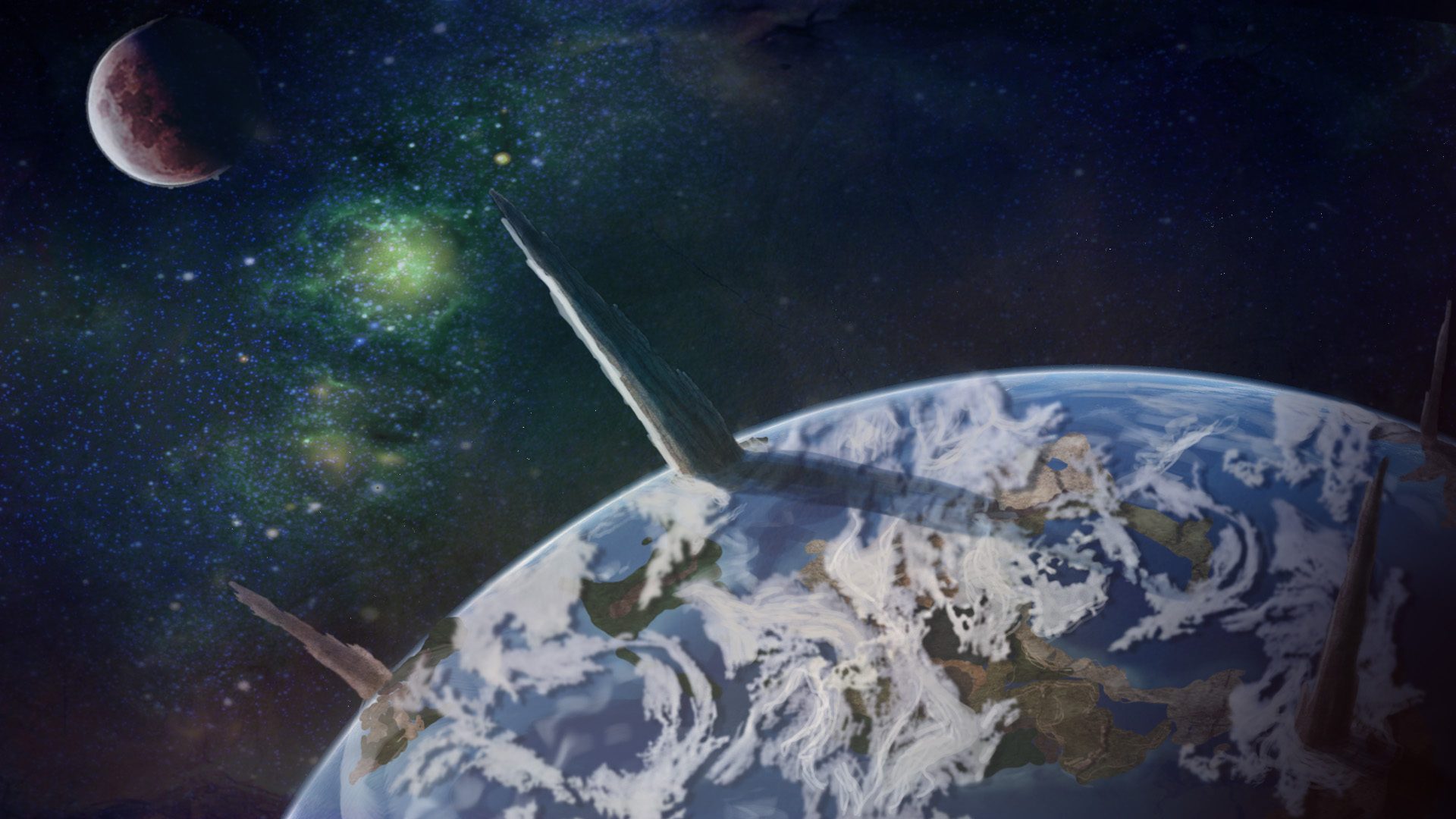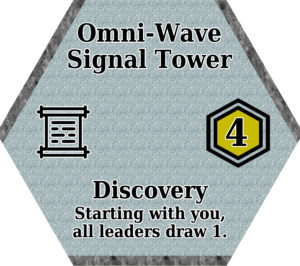This blog is the first in a short series documenting recent changes to Infinities: Defiance of Fate, the strategic adventure tabletop game we are developing in the Infinities universe. If you are unfamiliar with the tabletop game, here are the rules. Since entering a closed beta phase for Infinities in March, we have used the feedback of our new and seasoned testers alike to make significant changes to improve game flow, meaningful decision-making, aligning the ratio of tactics vs. strategy, card balance, and player engagement. For now, let’s talk tiles.
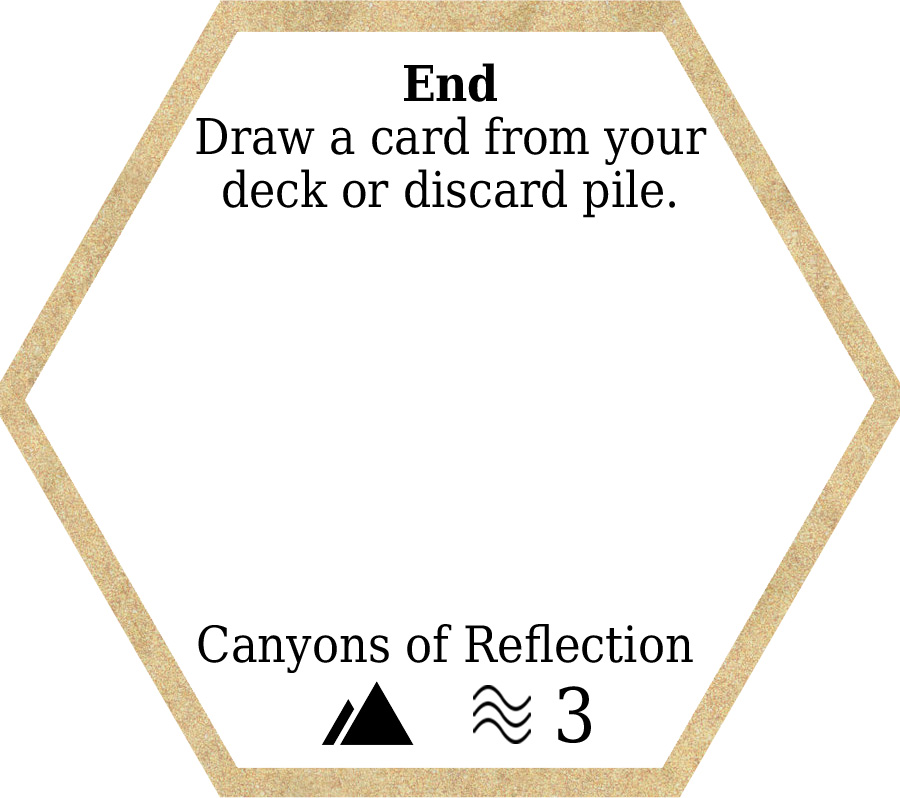
Tiles for Infinities have always had up to four properties: a name, a type, a Tide value, and (for some) an event. As players explored the game board, they placed tiles down to create a modular map. This is one of many aspects that results in each session of Infinities being different from the last.
The tiles were a bit bland, but functional. The main thing players needed to be mindful of was the Tide value of a tile and any events that could harm or benefit them. When playing or activating effects and abilities, players sought out a higher Tide tile because it makes them harder to block. When a player looked to engage another in combat, they waited to do so until their opponent was in a high Tide tile, as that scaled how much damage would be dealt on victory. A few cards also scaled on the variable T, the tile’s Tide, so players also needed to plan accordingly when playing one of those cards. Aside from Adventure Mode plots that required certain tile types in order to use special abilities, these were all the considerations taken in positioning.
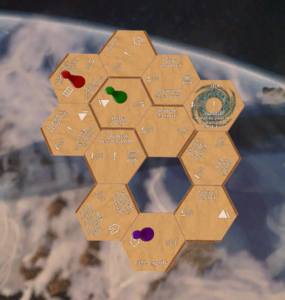
Walls
The most significant change to tiles since the inception of Infinities was the addition of walls. Walls are indicated by dark lines around the edge of a tile and prevent movement and attacks in that direction. When a player discovers a tile, they are bestowed the world-shaping power of orienting the tile however they want, so long as a path is available for the to move into the new one. This empowers exploring players strategic influence and can set up long-term situational benefits or pitfalls for all players on the board.
Some tiles have 1 wall, others 3, some none at all. In many cases, the amount of walls and their placement on the six sides of a tile are thematic. For instance, the Crystal Spider Cavern has 4 walls—a pair of 2 contiguous walls on each side—leaving only one channel of entrance and exit. A player discovering this tile has now created a bottleneck for enemies to access them and can modify their tactics accordingly. Meanwhile a discovered tile with 1 or 2 walls might be pivoted in such a way to block off a particular direction.
Walls have introduced an environment where tiles are more than a number and an occasional event. Instead, tiles demand attention and awareness to exploit positioning to the fullest in both offensive and defensive playstyles. The board is no longer just a different shape each game. Now, there are valleys and clearings and dead ends and traps littered throughout the board which players both create and navigate to meet their goals.
Rifts and Global Events
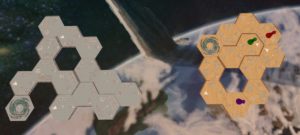
Rifts are integral to the theme of Infinities. At its core, through all its iterations, Infinities has been about the connection of multiple universes through rifts that cause worlds to bleed together and cause mayhem (or advance civilizations, but who’s keeping track?). For some time, rifts were a clumsy mechanic which involved all players being pulled into a new world on another table area upon discovery of a rift, then each player discovering a new tile in that world and filling their hand. The problem with this—apart from all the time spent resolving any events that happened and card draws/resolving—is that the new world was often left behind and forgotten. Table space was sacrificed to make way for two worlds and players were hard-pressed to find an excuse to give meaning to half of the board. Plus, the only way to get back to the first world was to go back through the Rift, creating an impossible bottleneck in high player-count games.
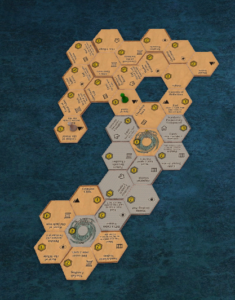
Thus, we’ve made two significant changes to the rift mechanic. First, we’ve changed the way the worlds blend together. Now, when a rift is discovered the player who found it lays tiles from the opposite world on each empty side adjacent to the rift. That’s it. No time-sucking vortex, no drawing, no movement at all. From then on, tiles discovered from the second world’s tiles are from that second world. The second change, now that the tiles of two worlds didn’t occupy separate areas of the table, is that players need not rely on the rift tiles to pass between worlds. Instead, as long as a tile is touching and there are no walls in the way, you may adventure back and forth to your heart’s content. The board is visually more striking and reflects the concept of two worlds temporarily blending together, rather than a portal transporting you from one place to the other. On that note, if the second world’s rift tile is found, it is considered adjacent to the other rift tile, so players can teleport that way!
We also introduced Global events on each world’s rift tile. These events are active on all tiles of that same world, meaning that if you want to take advantage of a certain world’s Global, you’ll want to find its rift as quickly as possible and draw your opponents into battling you on your terms instead of theirs. Thus far, Global events have resulted in some occasions of players flip-flopping between worlds as they deemed necessary to benefit themselves or inflict greater punishment to others. We’ll be monitoring the effectiveness of the rift and global changes moving forward.
The last change we made to tiles was done less to change the flow or strategy of the game and more to improve comprehension and clarity of rules. For the first year of the game, there were two game mechanics both called Tide. As mentioned above, a tile’s Tide was used to scale mechanics like block difficulty and attack damage. Whenever referencing this value, the variable T was used for the game mechanic. However there was also a Tide attribute on leaders and units which also shared the same icon. To remedy this, we’ve renamed our tile’s “value” mechanic to Influence and implemented a yellow “echoing hex” icon to represent it instead of a variable letter. This facilitates comprehension of game mechanics even for beginners by allowing them to look at their card with the icon and know to look down at the board to find the icon on their tile.
With the addition of walls for strategy, changes to rifts to improve the game flow and reinforce the game’s theme, and Influence to increase clarity, tiles are in a better place than ever before—and they are just one of the many transformations in the past 5 months of Infinities. Look for another blog detailing another of our many recent developments.

